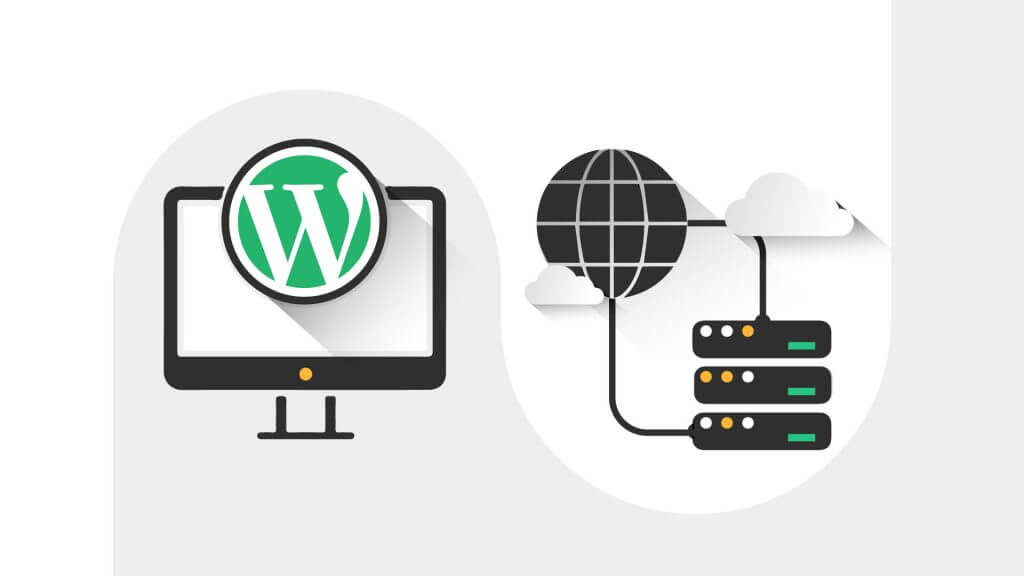Table of Contents
When it comes to launching an online store in 2025, your choice of hosting can make or break your business. Should you go for Shopify Hosting, the fully managed e-commerce powerhouse, or stick with Traditional Web Hosting, where you have more control but also more responsibility?
This isn’t just a tech decision—it’s a business strategy. Hosting affects:
- Your website’s loading speed (which impacts SEO & conversions)
- Your store’s security (customer trust)
- Your ability to handle traffic surges
- Your monthly operating costs
In this ultimate comparison of Shopify hosting vs web hosting, we’ll break down every key factor: performance, cost, security, customization, and ease of use. We’ll also share real-world scenarios and expert recommendations so you can make an informed choice.
💡 Quick Tip: If your primary goal is to sell products online without dealing with server headaches, Shopify Hosting might be the smarter move. But let’s dig deeper before you decide.

What Is Shopify Hosting? A Complete E-Commerce Ecosystem
Shopify Hosting isn’t just about storing your website’s files—it’s an integrated platform that combines hosting, website building, and e-commerce management in one subscription.
Here’s what you get with Shopify Hosting:
- Fully Managed Hosting – No server setup, no updates, no patches.
- Built-In E-Commerce Features – Product management, payment gateways, inventory tracking, marketing tools.
- Security by Default – Free SSL certificate, PCI compliance, 24/7 monitoring.
- Unlimited Bandwidth – No penalties for high traffic.
- Global CDN – Fast load times worldwide.
Unlike traditional hosting, you don’t need to purchase separate tools or hire a developer to set up your store. Shopify gives you a ready-to-launch store from day one.
What Is Traditional Web Hosting? Flexibility with Responsibility
Traditional web hosting means renting server space from providers like Bluehost, Hostinger, SiteGround, GoDaddy, or InMotion Hosting.
You get:
- Server resources (shared, VPS, or dedicated)
- Freedom to install any CMS (WordPress, Joomla, Magento, etc.)
- Full customization control
But here’s the trade-off: You must set up and manage your e-commerce platform. That includes:
- Installing WooCommerce or another e-commerce plugin
- Configuring payment gateways
- Managing security updates and backups
- Monitoring uptime and performance
For tech-savvy entrepreneurs, traditional hosting offers flexibility and potentially lower costs. But for beginners or busy store owners, it can be time-consuming.
Deep Dive: Key Differences Between Shopify Hosting and Traditional Web Hosting
1. Ease of Setup
Shopify Hosting:
- Sign up, pick a theme, upload products, and start selling.
- No coding or technical setup required.
Traditional Hosting:
- Buy hosting, install WordPress, set up WooCommerce, configure themes, add SSL, install security plugins.
✅ Winner: Shopify Hosting — saves days of setup.
2. Performance & Speed
Shopify:
- Built for e-commerce speed with automatic caching.
- Global CDN ensures international customers get fast load times.
Traditional:
- Performance depends on plan and optimization skills.
- May require premium caching plugins or CDN subscriptions.
✅ Winner: Shopify Hosting — optimized out of the box.
3. Security & Compliance
Shopify:
- PCI DSS compliant for online payments.
- Free SSL and proactive security monitoring.
Traditional:
- Must handle compliance, SSL installation, and malware scanning yourself.
✅ Winner: Shopify — removes security headaches.
4. Scalability
Shopify:
- Auto-scales for high traffic.
- No downtime during sales spikes.
Traditional:
- Need to manually upgrade plans or servers.
✅ Winner: Shopify — instant scalability.
5. Cost Breakdown
Shopify Pricing (2025):
- Basic: $39/month
- Shopify: $105/month
- Advanced: $399/month
Traditional Hosting Pricing:
- Shared: $2–$10/month
- VPS: $20–$80/month
- Dedicated: $100+/month
💡 Hidden Cost Alert: Traditional hosting requires paying for SSL, security tools, and premium themes—often adding $20–$50/month.

See also
- Top 10 Common SEO Mistakes New Website Owners Make
- The Ultimate Guide to Digital Marketing: Strategies, Tools, and Trends
- How Search Engines Work: A Simple Guide for New Marketers
6. E-Commerce Features
Shopify:
- 100+ payment gateways
- Abandoned cart recovery
- Multi-channel selling (Facebook, Instagram, TikTok, Amazon)
Traditional:
- Add-ons and plugins required.
- Can be powerful but requires more work.
✅ Winner: Shopify — plug-and-play selling.
Detailed Pros and Cons Table
| Feature | Shopify Hosting ✅ | Traditional Hosting 🖥️ |
|---|---|---|
| Setup Time | Minutes | Hours–Days |
| Monthly Cost | Higher | Lower initial |
| E-Commerce Tools | Built-in | Manual setup |
| Security | Managed | User-managed |
| Customization | Limited backend | Full access |
| Scalability | Automatic | Manual upgrades |
| Payment Gateways | Integrated | Manual integration |
Case Study: How Shopify Hosting Boosted Sales by 40%
Scenario: Sarah, a small business owner selling handmade jewelry, moved from traditional hosting to Shopify Hosting in early 2024.
Results after 3 months:
- Website load time improved by 1.8 seconds.
- Abandoned cart recovery recovered $2,000 in lost sales.
- She spent 0 hours on technical maintenance compared to 8–10 hours/month before.
Sarah’s verdict:
“Switching to Shopify Hosting let me focus on designing and selling instead of updating plugins. My revenue jumped 40%—and I sleep better at night knowing my store is secure.”
FAQs — Shopify Hosting vs Web Hosting
Q: Is Shopify Hosting more expensive than traditional hosting?
Yes, the monthly cost is higher, but it includes hosting, e-commerce tools, security, and support—often replacing several separate expenses.
Q: Can I migrate from traditional hosting to Shopify?
Yes, Shopify offers migration tools and partner support.
Q: Does Shopify Hosting work for non-e-commerce websites?
Technically yes, but it’s optimized for online stores—traditional hosting may be better for blogs or portfolios.
Q: What if I need custom functionality?
Shopify’s App Store has thousands of integrations. Traditional hosting may offer more backend flexibility for advanced coding.
Final Recommendation
If your goal is to sell products online with minimal tech hassle, Shopify Hosting is the clear winner. It’s faster, more secure, and fully optimized for e-commerce—allowing you to focus on growing sales instead of managing servers.
🚀 Start your free trial with Shopify today and launch your online store in under an hour:👉 Get Started with Shopify Hosting
Shopify Hosting vs WooCommerce on Traditional Hosting
When people talk about traditional web hosting for e-commerce, they often mean WordPress + WooCommerce. While WooCommerce is a powerful, flexible option, it comes with its own set of challenges compared to Shopify Hosting.
1. Setup Process
- Shopify: Choose a plan, pick a theme, and start selling.
- WooCommerce: Install WordPress, install WooCommerce, configure shipping, taxes, payment gateways, and choose a compatible theme.
💡 If you want to start selling within hours, Shopify wins. If you enjoy building your site from scratch, WooCommerce offers more flexibility.
2. Maintenance
- Shopify: Automatic updates, security patches, and hosting improvements.
- WooCommerce: You are responsible for updating WordPress core, plugins, and themes—failure to do so can break your store or create security vulnerabilities.
3. Cost
WooCommerce itself is free, but you’ll need:
- Hosting ($5–$20/month)
- Premium theme ($50–$100 one-time)
- Paid plugins ($30–$300/year depending on features)
Shopify’s monthly fee may seem higher, but it bundles everything into one predictable cost.
4. E-Commerce Features
- Shopify: Built-in abandoned cart recovery, integrated payments, marketing automation.
- WooCommerce: Can match Shopify’s features but requires plugins—each one adds complexity.
✅ Verdict: For beginners or small teams, Shopify is simpler and faster to launch. WooCommerce is great for those who want deep customization and are comfortable managing a website.
Step-by-Step Guide to Getting Started with Shopify Hosting
Step 1: Go to Shopify’s website and click Start Free Trial.
>Step 2: Enter your email address, create a password, and name your store.
>Step 3: Answer quick questions about your business (optional).
>Step 4: Choose a theme from the Shopify Theme Store—free or paid.
>Step 5: Add your products with titles, descriptions, images, and prices.
>Step 6: Set up payment gateways (Shopify Payments, PayPal, or others).
>Step 7: Configure shipping rates and tax settings.
>Step 8: Preview your store and click Publish when ready.
💡 Pro Tip: Use Shopify’s built-in SEO tools to add meta titles, descriptions, and optimize product pages before launching.
SEO Impact: Shopify Hosting vs Traditional Hosting
Your hosting choice can directly influence your search engine rankings.
1. Page Speed
- Shopify’s CDN reduces load times globally—a known SEO ranking factor.
- Traditional hosting speed depends on your server location and setup—slower pages can hurt rankings.
2. Uptime
- Shopify offers 99.99% uptime.
- Cheaper traditional hosts may have downtime during high-traffic events—bad for both SEO and sales.
3. Security
Google favors secure sites. Shopify comes with free SSL by default. On traditional hosting, you may need to install and renew SSL manually.
4. Structured Data
Shopify automatically adds e-commerce schema to help Google display rich snippets (price, availability). With traditional hosting, you must configure this manually.
5. Mobile Optimization
Shopify themes are responsive out of the box. On traditional hosting, mobile optimization depends on your chosen theme.
✅ SEO Winner for E-Commerce: Shopify Hosting.

Final Word: The Smart Choice for 2025
If you want a fast, secure, and sales-focused store without spending days managing hosting, Shopify Hosting is your best bet. Traditional hosting still has its place—especially for highly customized sites—but for most online store owners, Shopify delivers better results with less effort.
🚀 Ready to build your store?
👉 Start your free trial with Shopify now and see why over 4.5 million stores trust Shopify Hosting.

